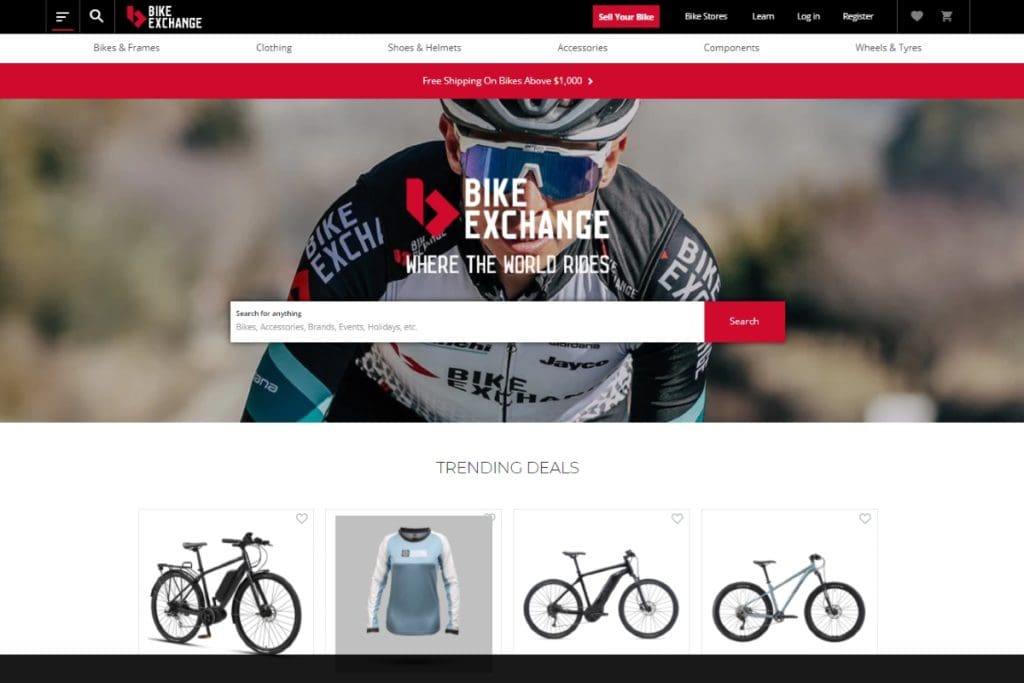BikeExchange Reveals Strong Growth for 2020/21

BikeExchange is one of a very small number of Australian bicycle industry related companies that is publicly listed on the Australian Stock Exchange (ASX). This requires them to regularly publish detailed financial statements and reports outlining any significant changes to staffing, operations and any other changes that may materially impact their financial performance.
As we previously reported here, Bike Exchange first listed on 9th February 2021. Their initial share price was 23 cents, soon rising to 26 cents but since June they’ve gradually fallen back to be trading at around 18 cents during August 2021.
On 27th August BikeExchange released their financial report for the full financial year ending 30th June 2021. Although a wide range of trading measures were all up strongly, their bottom line was down, with their full year loss growing from $2.238 million in 2019/20 to $6.301 million in 2020/21.
The Latz Report attended BikeExchange’s first annual financial year presentation (held via Zoom), in which CEO Mark Watkin and CFO Andrew Demery elaborated on their results and answered questions from an audience of about 20 financial analysts.
In summary, BikeExchange is currently focused upon growth as their first priority, ahead of profits. Still having $15.9 million cash available as at 30th June 2021 from their float on 9th February, they still have a long ‘runway’ before they’ll need to either turn a profit or raise further capital.
When pressed by one analyst on what level of turnover would they require to become profitable, Andrew Demery suggested $100 total transaction value (TTV) million per annum, which is just under four times the latest financial year result.
Asked about where this growth would come from, they emphasised a pivot from their traditional subscription model, where (mainly) retailers pay an ongoing subscription fee to access BikeExchange’s platform, to a commission model, where more transactions are made on BikeExchange in return for a commission. The rate of this commission varies depending upon the type of product and customer, but for 2020/21 averaged 8.2%.
Mark Watkin said he does not see the bike market shrinking post-covid. In fact the opposite, he sees strong ongoing growth. He said that right now, mountain bikes are by far their biggest category, but he predicted future growth in other categories including urban bikes.
He said that over 60% of consumer enquiries are about the availability of bikes, in part reflecting the global shortages during covid.
In explaining their increased losses, Andrew Demery said that there were about one million dollars in additional costs in relation to being listed on the ASX. He also spoke about increased staffing levels with more to come in 2021/22. And he spoke about marketing spend, which increased from $359,000 in 2019/20 to $1,635,000 in 2020/21. Most of this was on digital marketing including SEO (search engine optimisation) and SEM (search engine marketing).
BikeExchange Numbers at a glance
| Total Transaction Value (TTV) | $25.3 million | up 93% |
| Revenue | $4.9 million | up 26% |
| Sessions | 28.2 million | up 29% |
| E-commerce transactions | 33,473 | up 60% |
| Average Order Value | $636 | up 46% |
| Average Commission Rate | 8.2% | up from 5.0% |
| Active Retail Accounts | 1,600 | up 10% |
| Trading loss for 2020/21 | $6,301,000 | up from $2,238,000 |
